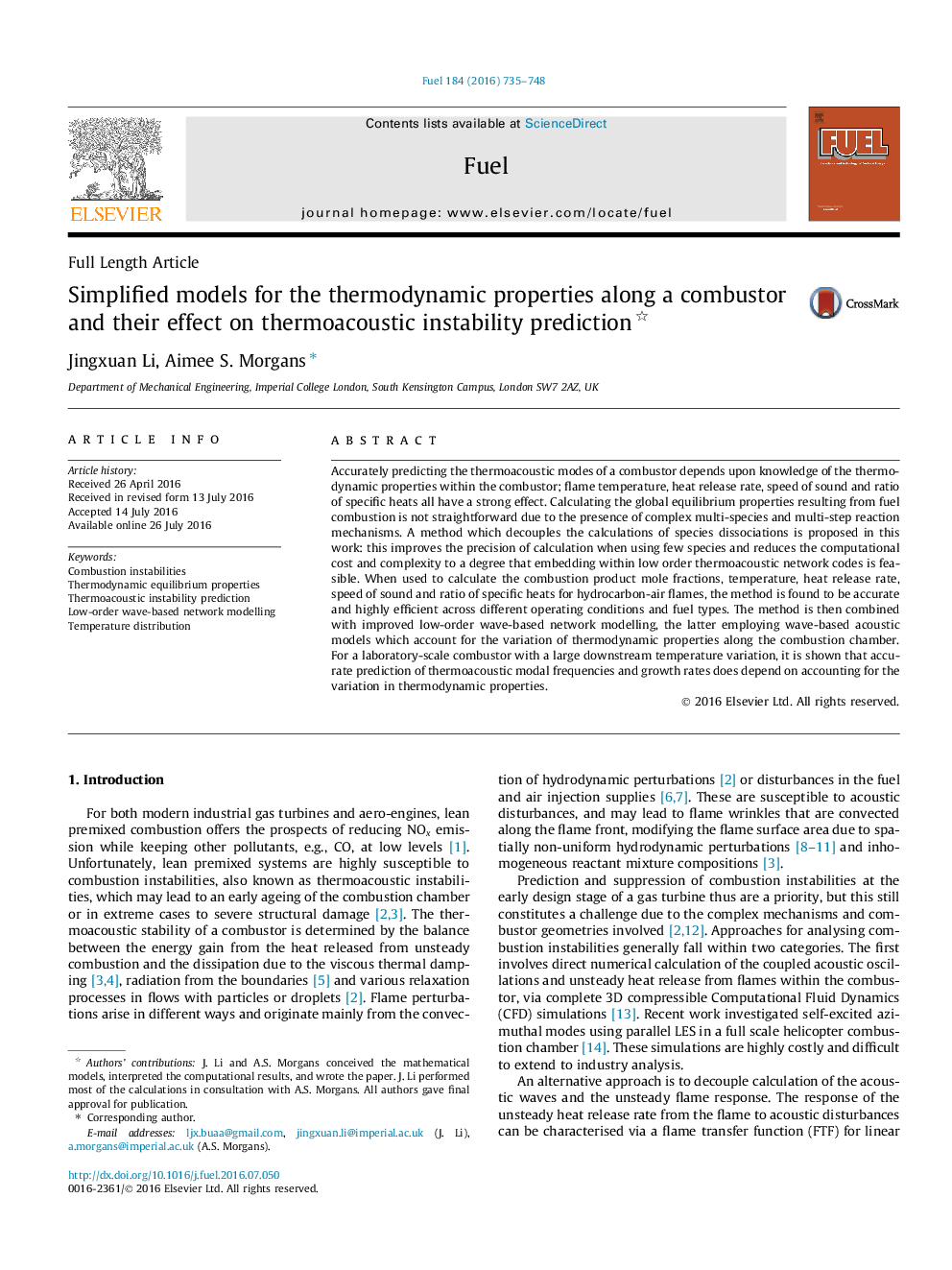| Article ID | Journal | Published Year | Pages | File Type |
|---|---|---|---|---|
| 6633139 | Fuel | 2016 | 14 Pages |
Abstract
Accurately predicting the thermoacoustic modes of a combustor depends upon knowledge of the thermodynamic properties within the combustor; flame temperature, heat release rate, speed of sound and ratio of specific heats all have a strong effect. Calculating the global equilibrium properties resulting from fuel combustion is not straightforward due to the presence of complex multi-species and multi-step reaction mechanisms. A method which decouples the calculations of species dissociations is proposed in this work: this improves the precision of calculation when using few species and reduces the computational cost and complexity to a degree that embedding within low order thermoacoustic network codes is feasible. When used to calculate the combustion product mole fractions, temperature, heat release rate, speed of sound and ratio of specific heats for hydrocarbon-air flames, the method is found to be accurate and highly efficient across different operating conditions and fuel types. The method is then combined with improved low-order wave-based network modelling, the latter employing wave-based acoustic models which account for the variation of thermodynamic properties along the combustion chamber. For a laboratory-scale combustor with a large downstream temperature variation, it is shown that accurate prediction of thermoacoustic modal frequencies and growth rates does depend on accounting for the variation in thermodynamic properties.
Related Topics
Physical Sciences and Engineering
Chemical Engineering
Chemical Engineering (General)
Authors
Jingxuan Li, Aimee S. Morgans,
